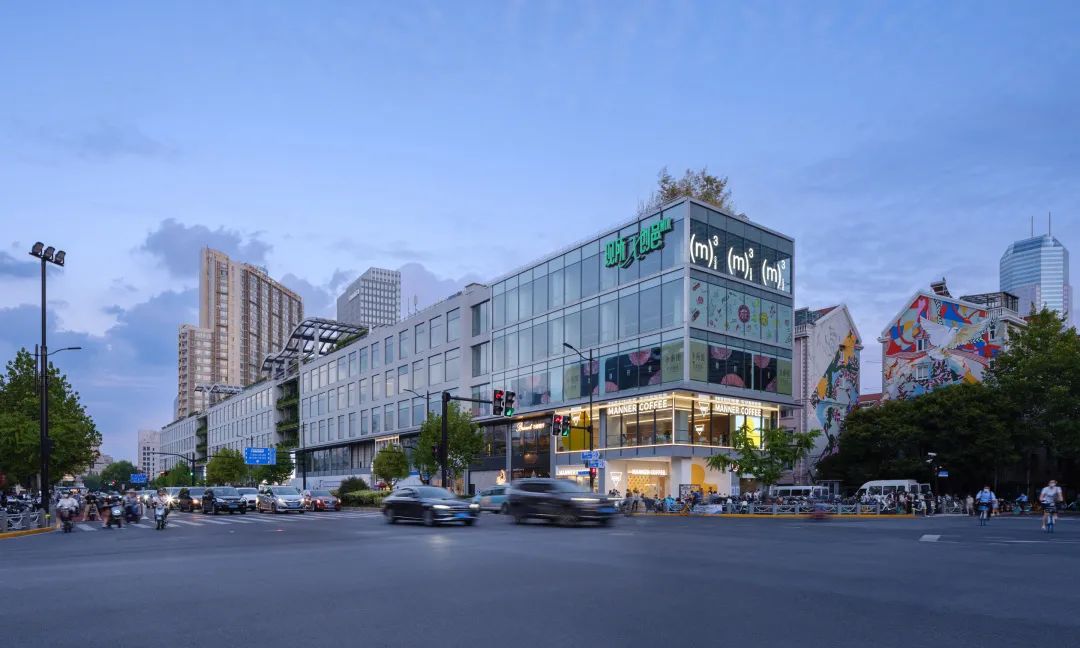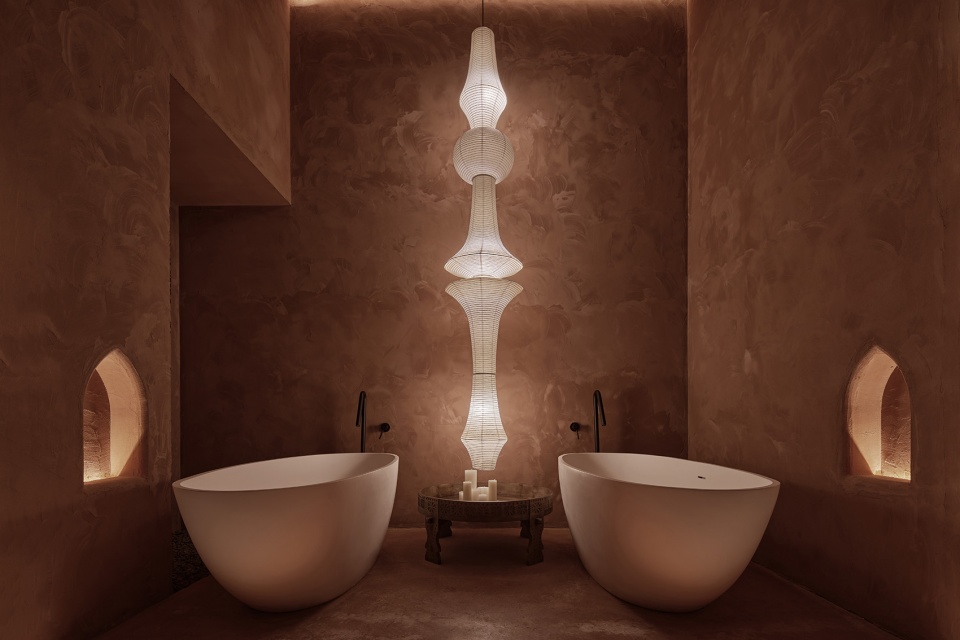

在蒂尔堡,此前的和平教堂被改造为年轻人士共同生活的社区。整个住宅项目位于两侧的过道中,通过预留教堂庄严的中殿空间,将这里打造成一个可供居民生活、工作和休闲的多样化场所。
In Tilburg, the former Peace Church has been converted into a co-living environment for young professionals. The entire residential program is situated in the side aisles, leaving the imposing nave of the church free for a diversity of places to live, work and relax.
▼项目外观,Exterior ©René de Wit
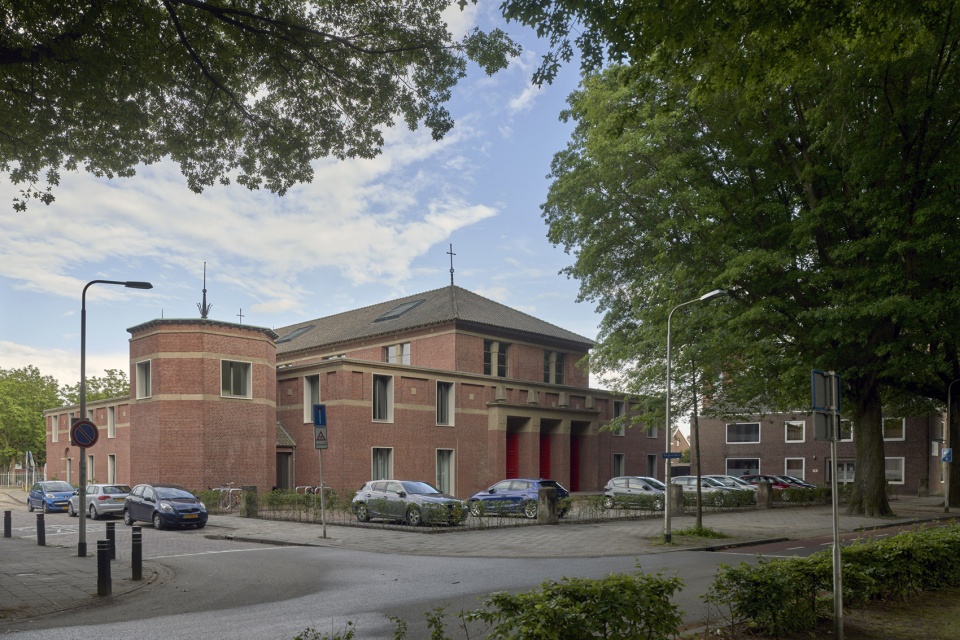
重建的教堂由建筑师H.Pontzen于1954年设计。战后时期,传统的教堂建筑以去除装饰元素的正交形式为特色。在这种形式之上,无论是传统材料还是新的建筑材料,都呈现出了早期基督教堂的风貌。同时,建筑中清晰可见建筑师当时进行的简洁朴素的细节处理。通过对材料的使用以及这种精心的细节设计,避免了形式上的风格化,以实现建筑的永恒性,也使得教堂极其适合重新被利用,而本次改造也是继2015年教堂取消礼拜仪式后,再一次成为了城中热议的话题。
The reconstruction church was designed by architect H. Pontzen in 1954. The post-war, traditional architecture of the church is characterized by the orthogonal form language, which has been stripped of ornamentation. In this way, both with traditional and new building materials, we go back to early Christian forms. The building contains a neat, sober detailing. This use of materials and this detailing ensures that the building looks timeless and appears almost styleless. It makes the church extremely suitable for repurposing, which became topical in 2015 after the church was withdrawn from its worship service.
▼项目立面,Facade ©René de Wit
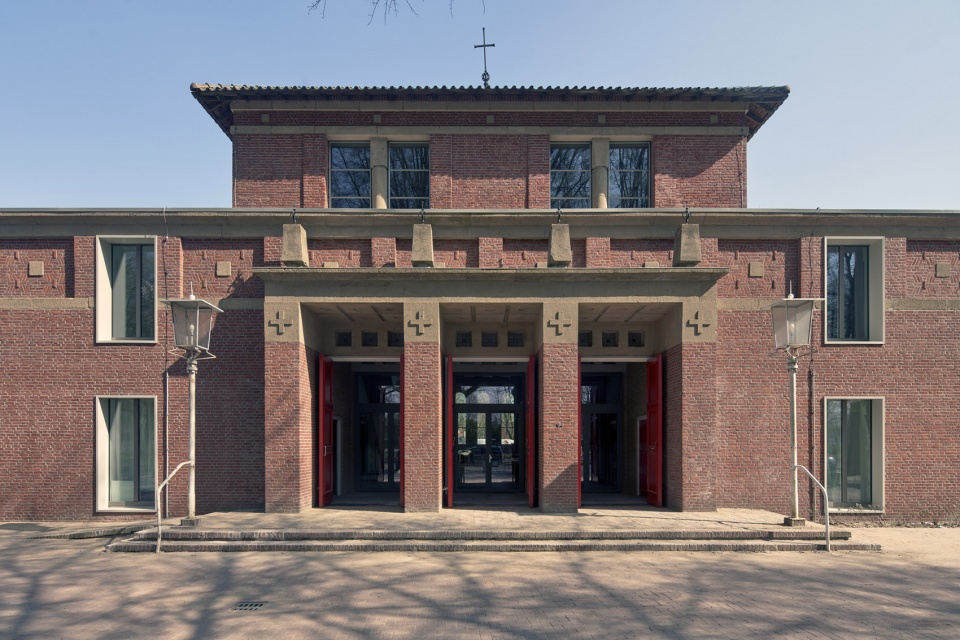
除了教堂建筑外,这座建筑群还包括一间圣物室以及一个洗礼堂。外观与内饰均采用经得起时间考验的材料,具有坚固的外表。最终呈现了这一座看起来巨大敦实的建筑,在半个多世纪后依然美丽。空间内部,实空间和虚空间之间形成了良好的对比。穿透厚墙的光线也为空间营造出一种特殊的氛围。
In addition to the church building, the complex also consists of a sacristy and a baptistery. Both the exterior and the interior are characterized by a robust appearance, composed of materials that can withstand the test of time. The result is a building that appears massive and voluminous, and which is still beautiful after more than half a century. Inside, a nice contrast is created between mass and emptiness. The light that penetrates through the thick walls creates a special atmosphere.
▼项目内景,Project interior ©René de Wit

▼位于柱结构后方的住宅, The residential program behind the columns ©René de Wit


以保留这一特性作为团队重新调整用途的出发点。通过将新的小型住宅单元项目全部放置在两侧过道,成功地为未来保留下空旷的特点。空旷的中殿反之也成为了房屋的延伸。在这里,居民不仅可以办公,还有休闲放松的空间,这种共同生活的形式也为提升居住的舒适度以及建筑内的社会凝聚力创造了机会。
The preservation of this characteristic has been our starting point for the repurposing. We have managed to keep the characteristic emptiness in the future as well by placing the new program of small residential units entirely in the two side aisles. The empty nave in turn serves as an extension of the house. Here you can work and there is room for relaxation. This form of co-living increases living comfort and social cohesion within the building.
▼可供居民工作、休闲的中殿,The empty nave for residents to work and relax ©René de Wit

新建项目位于现有柱结构的后方,入口处设有宽敞的长廊。住宅外墙采用的材料充分体现了教堂现有的坚固特性。通过重新设计以及高品质的质朴材料加以辅助,巧妙地为建筑增添了一层时间痕迹,并在新旧之间创造了一种令人兴奋的层次感。
The new program is located behind the existing column structure and has wide galleries at the entrance. The facades of the houses are made of materials that elaborate on the existing robust character of the church. By redesigning with high-quality, sober materials, a layer of time is subtly added to the building. An exciting layering is created between old and new.
▼可供居民工作、休闲的二层空间,The upper level for residents to work and relax ©René de Wit
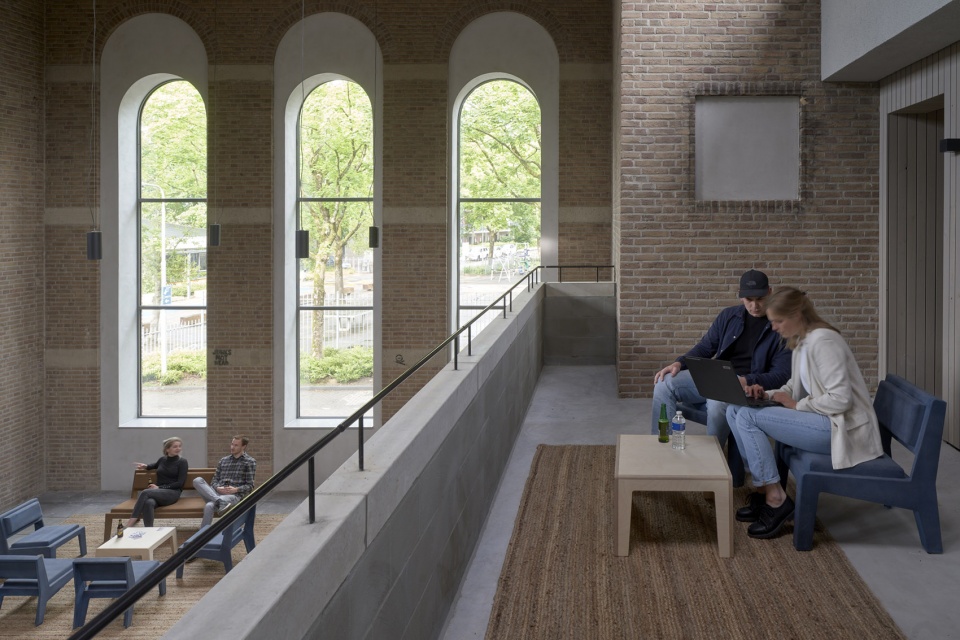
建筑的外观基本保持原貌。在现有的凹窗处,被重新切割的新窗口为屋内引入光线。窗框被放置在砖石的后方,侧壁采用金属盖板装饰。在这里,设计工作建立在保护建筑特色的基础上展开,确保不会因增加新的项目而造成任何破坏。通过保留教堂的原貌并适度增加新的项目,这座住宅楼也将在未来继续经受住时间的考验。
Little has changed in the quality exterior of the building. In the rhythm of the existing recessed windows, new openings have been sawn to bring daylight into the houses. The window frames are placed behind the masonry and the reveals are finished with metal flashing. Thus, here too, the design is based on preserving the building’s characteristics by not causing any disruption by adding the new time layer. By preserving the quality of the church and adding a new, but modest program, the residential building will also stand the test of time in the future.
▼材料近景,Detailed view of the materials ©René de Wit
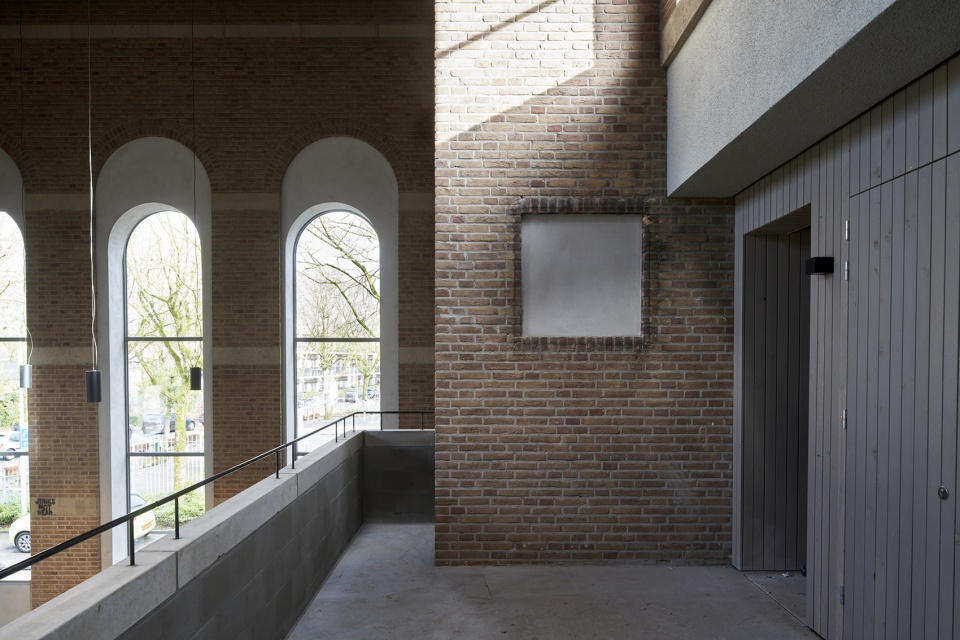
▼区位图,Site map ©Bedaux de Brouwer Architecten

▼改造前平面图,The original floor plan ©Bedaux de Brouwer Architecten
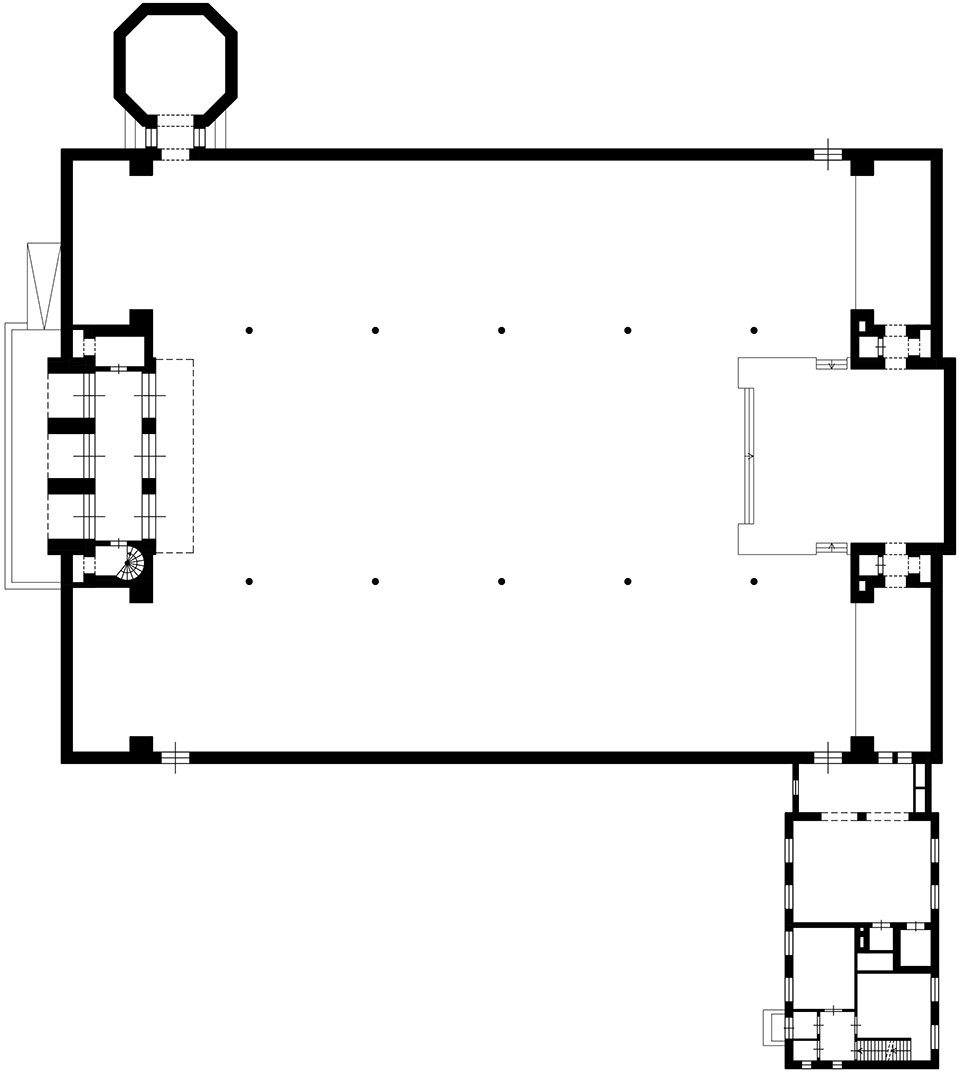
▼改造后平面图,The new floor plan ©Bedaux de Brouwer Architecten

▼剖面图,Section ©Bedaux de Brouwer Architecten
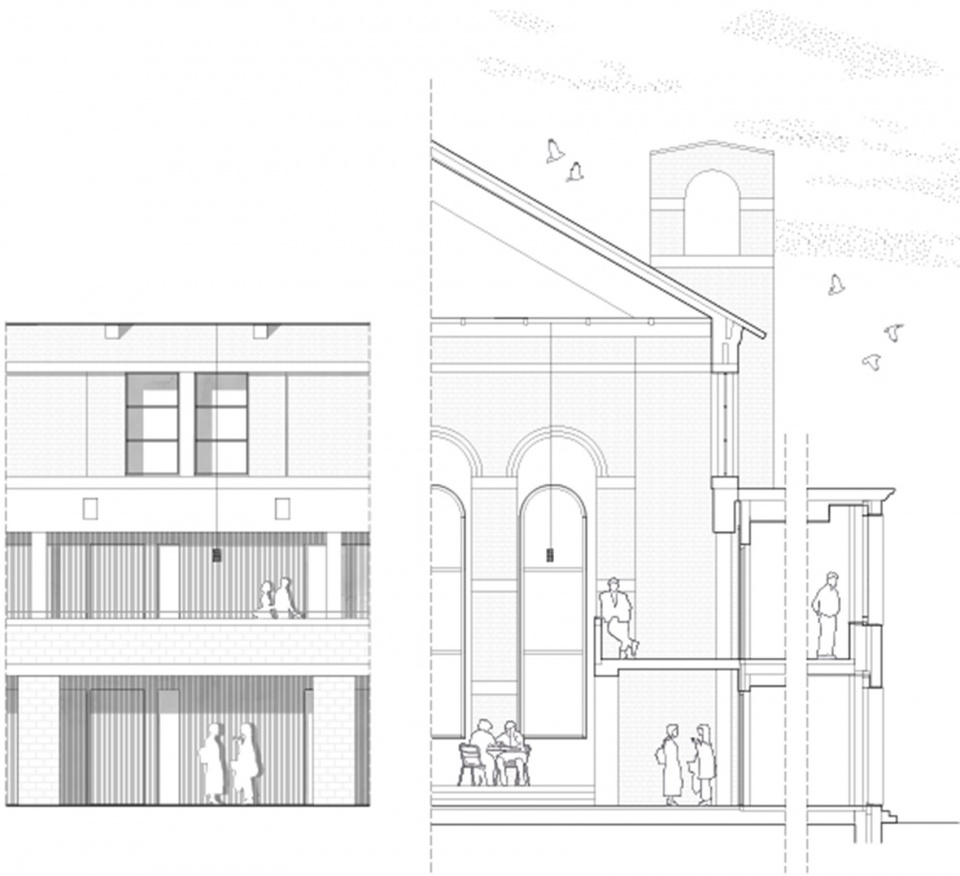
Photography:René de Wit










